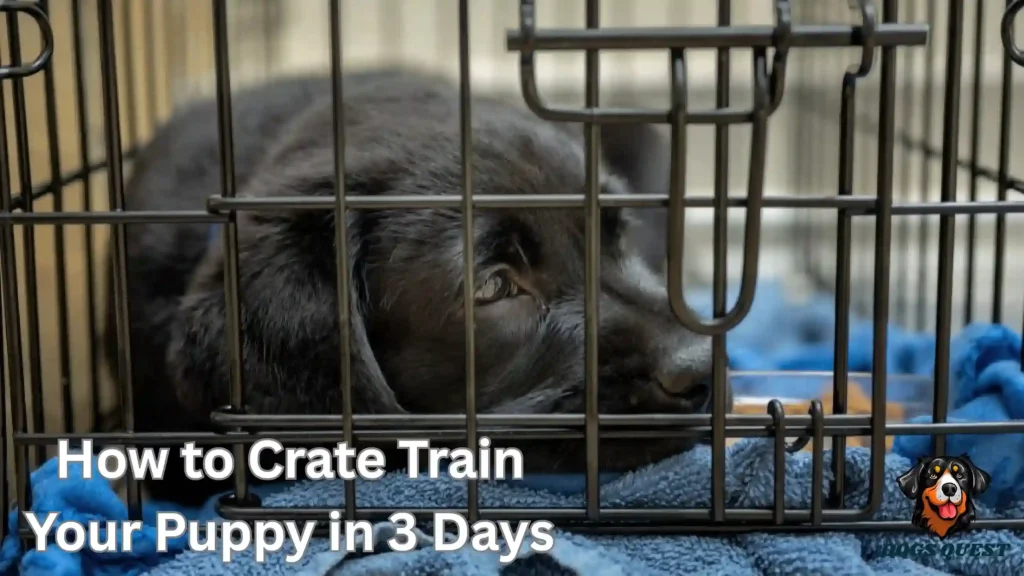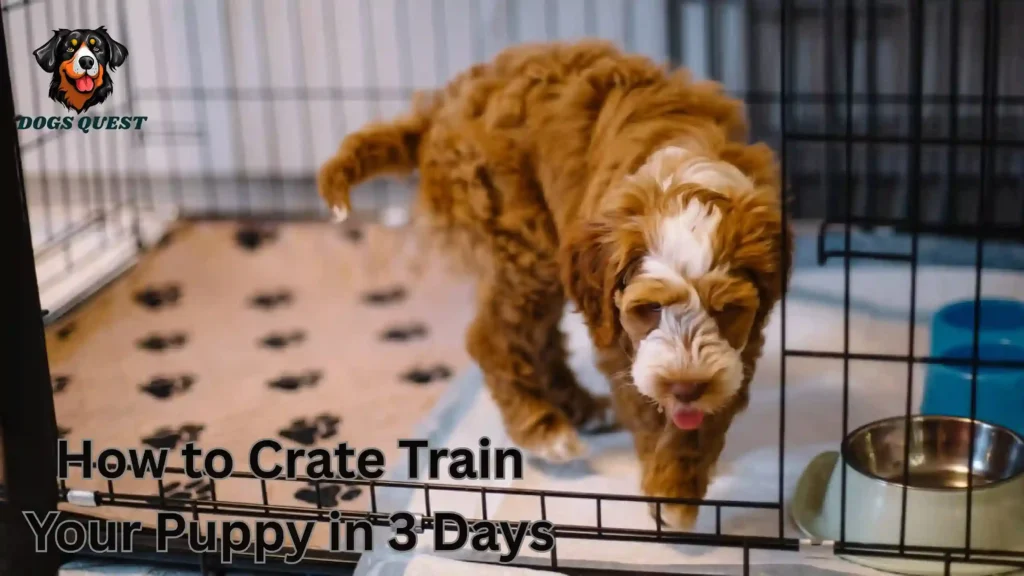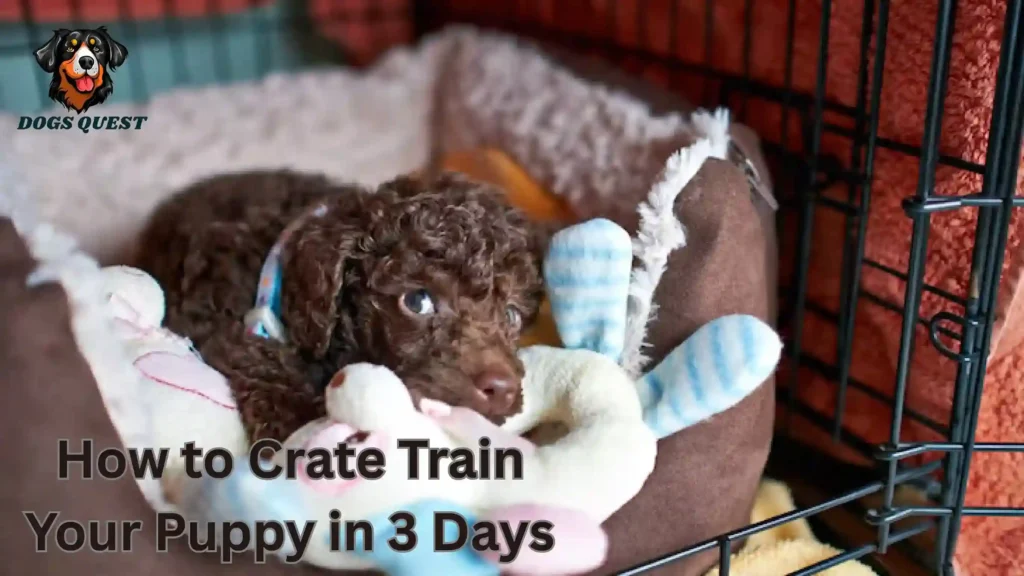Discover how to crate train your puppy in 3 days with this proven, positive, and stress-free method. Step-by-step guide, expert tips, and FAQs for fast, effective puppy crate training.
Introduction
Bringing home a new puppy is exciting, but house training can quickly feel overwhelming. That’s where crate training becomes your best friend. Many dog owners believe crate training takes weeks, but with the right strategy, you can actually crate train your puppy in 3 days.
In this guide, you’ll learn exactly how to crate train your puppy in 3 days using positive reinforcement, natural canine instincts, and structured routines. Whether you’re a first-time puppy parent or simply need a refresher, this step-by-step method is designed to be fast, effective, and stress-free for both you and your pup.
Why Crate Training Works

The Natural Instinct of Puppies
Dogs naturally seek out a safe, den-like space where they can rest without fear. By providing a crate, you’re tapping into this instinct. When done right, the crate becomes a comfort zone, not a punishment.
Benefits of Crate Training
- Faster potty training – puppies avoid soiling their sleeping area.
- Reduced anxiety – the crate offers security when you’re away.
- Safer home – keeps your puppy from chewing dangerous items.
- Better sleep – a calm environment helps puppies rest longer.
When you understand these benefits, it’s easier to see why learning how to crate train your puppy in 3 days is worth your effort.
Preparing for 3-Day Crate Training

Before diving into the step-by-step method, preparation is key.
Choosing the Right Crate
- Size matters: Your puppy should be able to stand, turn around, and lie down comfortably, but not have too much space.
- Type of crate: Wire crates are breathable and portable, while plastic crates are more den-like and cozy.
Setting Up the Crate
- Place it in a quiet but not isolated area (like the living room corner).
- Add a soft blanket or crate pad for comfort.
- Keep a few safe chew toys inside to create a positive association.
With the right setup, your journey on how to crate train your puppy in 3 days starts strong.
Step-by-Step: How to Crate Train Your Puppy in 3 Days

Now let’s get into the structured method. Each day builds on the last.
Introduction and Positive Association
The first step in how to crate train your puppy in 3 days is making the crate inviting.
What to Do:
- Encourage exploration: Keep the crate door open and let your puppy sniff around.
- Use treats: Toss a small treat or kibble inside the crate to reward entry.
- Feed meals inside: Start feeding your puppy in the crate so they link it to positive experiences.
- Short stays: Close the door for just a few minutes while staying nearby.
Goal: Puppy sees the crate as a happy, safe space.
Short Confinement and Comfort Training
On the second day of how to crate train your puppy in 3 days, you’ll increase crate time.
What to Do:
- Practice with commands: Say a cue like “crate” or “bed” each time you guide them in.
- Gradually extend crate time: Start with 5–10 minutes, then slowly increase to 30 minutes.
- Stay calm when leaving: Step out of sight for a short time and return quietly.
- Avoid emotional exits: No dramatic goodbyes—keep it neutral to reduce separation anxiety.
Goal: Puppy remains calm in the crate for up to 30 minutes.
Longer Periods and Overnight Training
By the third day, your pup should feel comfortable staying in the crate longer.
What to Do:
- Extend crate sessions: Aim for 1–2 hours during the day with short breaks.
- Overnight crate training: Place the crate in your bedroom so your puppy feels secure.
- Potty schedule: Take them outside immediately after waking up or being released.
- Reward calmness: Treats and praise when they rest quietly inside.
Goal: Puppy successfully sleeps in the crate overnight and stays in it calmly during short absences.
Essential Tips for Success

Stick to a Routine
Consistency is the secret behind how to crate train your puppy in 3 days. Puppies thrive when they know what to expect.
Use Positive Reinforcement Only
Never use the crate as punishment. Puppies should always associate it with safety, comfort, and rewards.
Manage Potty Breaks
Young puppies can usually “hold it” for one hour per month of age. Plan potty breaks accordingly to avoid accidents.
Stay Patient and Calm
Every puppy is unique. Some may need an extra day or two, but with structure, most adapt quickly.
Common Mistakes to Avoid
- Leaving the puppy too long in the crate too soon.
- Using the crate as punishment.
- Not providing enough exercise or mental stimulation.
- Skipping nighttime potty breaks for very young puppies.
Avoiding these mistakes will make your journey on how to crate train your puppy in 3 days smoother.
Final Thoughts
Learning how to crate train your puppy in 3 days may sound like a challenge, but it’s absolutely possible with the right approach. By focusing on positive reinforcement, structure, and patience, you’ll help your puppy see the crate as a safe haven rather than a cage.
With this proven step-by-step guide, you now have everything you need to succeed. Crate training not only accelerates potty training but also sets the foundation for a well-behaved, confident, and happy dog.
Frequently Asked Questions
Q1: Can all puppies really be crate trained in 3 days?
Most puppies can adapt quickly if you follow the structured method. However, some may need a few extra days depending on their age, breed, and temperament.
Q2: Should I use treats every time?
Yes, especially during the first few days. Over time, you can phase out treats and rely on praise.
Q3: What if my puppy cries in the crate?
Ignore whining if you know it’s not for bathroom needs. Reward quiet behavior instead.
Q4: Is crate training cruel?
Not at all. When done right, crate training mimics a dog’s natural den instinct and provides comfort.

